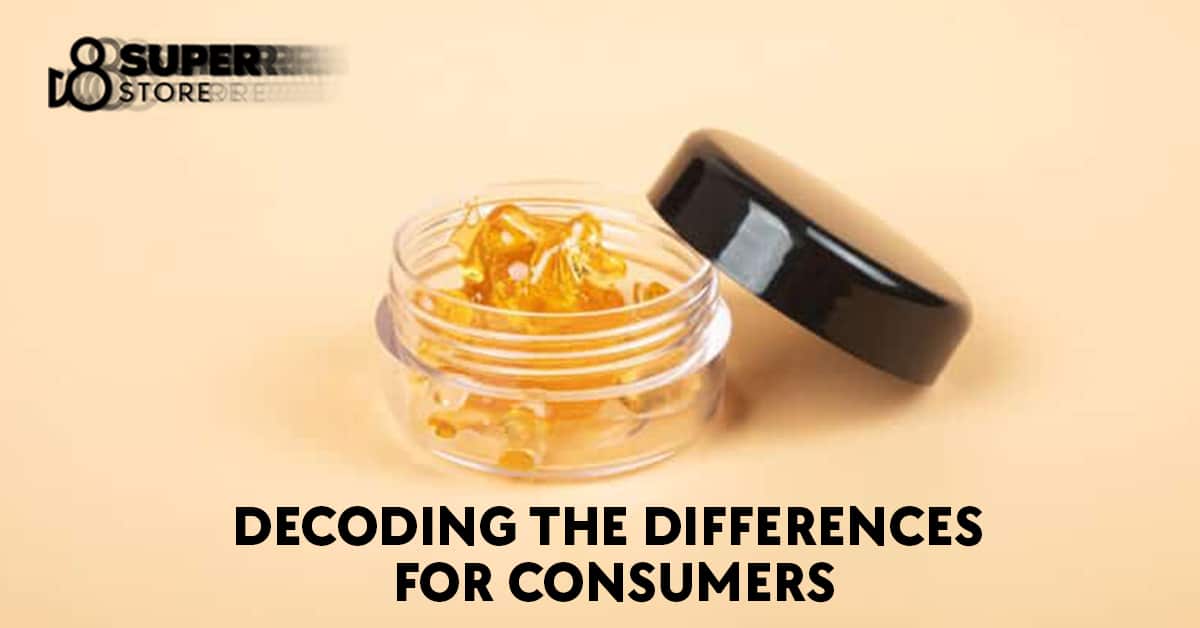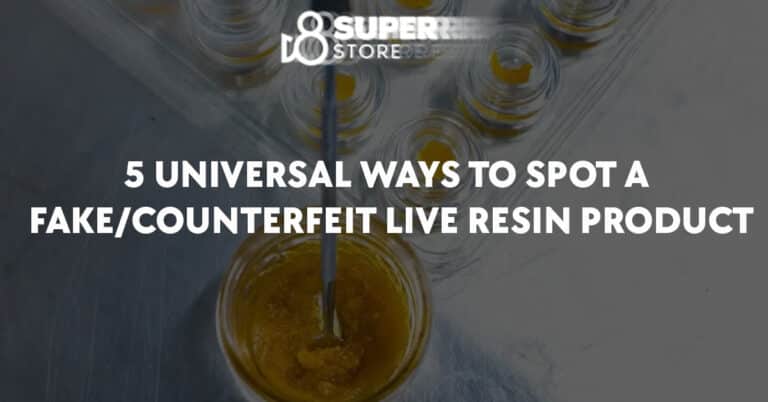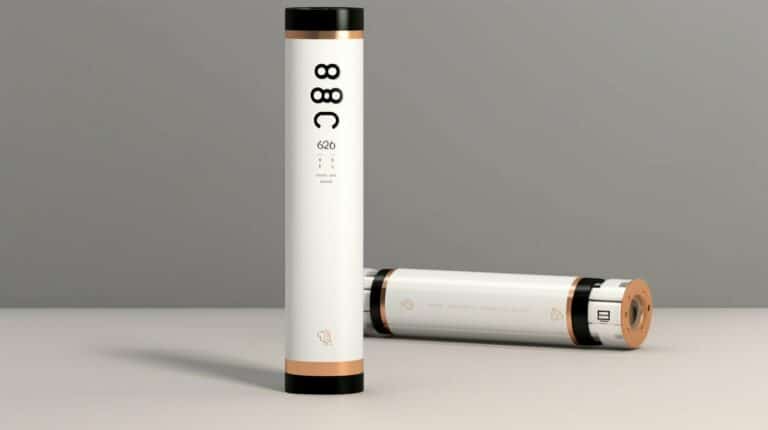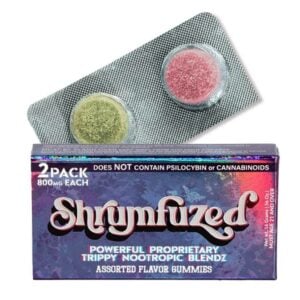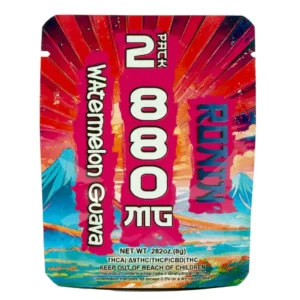Hash Rosin vs Rosin: Decoding the Differences for Consumers
Hash rosin and rosin: these are the celebs of the cannabis concentrate world! They pack a punch with their unique making process, which sets them apart big time. Without using solvents, they each rock their own awesome style. If you’re thinking about exploring the hash rosin or rosin universe, spotting the key differences between them can totally change the game for you. It could even turn your adventure into something legendary.
Rosin is made from the plant material itself, typically using a combination of heat and pressure to extract the resinous sap from the cannabis plant. On the other hand, hash rosin is derived specifically from hash, which is a concentrated form of cannabis that has already undergone a separate extraction process. The technique used for producing hash rosin often provides a purer and more potent final product than that of traditional rosin, making it a preferred choice for many experienced cannabis users.
Key Takeaways
- Hash rosin and rosin are both popular cannabis concentrates, but hash rosin is typically more potent due to its unique extraction process.
- Both concentrates are solventless, using heat and pressure during production, ensuring a cleaner and more natural product.
- Understanding the differences between these two forms of cannabis is crucial for making an informed choice and maximizing the experience.
Fundamentals of Hash and Rosin
Hash and rosin are two popular types of cannabis concentrates that provide consumers with a more potent and efficient means of experiencing the effects of cannabinoids, the active chemical compounds found in cannabis plants.
Hash is a traditional concentrate that has been around for centuries and is known for its characteristic solid, compressed form. It is derived by separating trichomes, the resinous glands containing cannabinoids, from the cannabis plant material. These trichomes are then typically collected and compressed using heat and pressure, forming a slab or block of sticky, dark concentrate. The resulting product is a potent, flavorful, and versatile cannabis concentrate that can be consumed in various ways, such as smoking, vaporizing, or infusing into edibles.
On the other hand, rosin is a more recent addition to the world of cannabis concentrates. It is produced using a solventless extraction method that relies on heat and pressure to extract cannabinoids and terpenes directly from the cannabis plant material. This process starts by wrapping the plant material or hash in a filter, followed by pressing it between heated plates to squeeze out the rosin. The end product is a translucent, golden resin that is highly potent, with a strong terpene profile, and free of any residual solvents.
There are notable differences between hash and rosin. While both are considered to be cannabis concentrates, hash is generally made from the trichomes of the cannabis plant and often has a darker, solid appearance. In contrast, rosin is made directly from the plant material and has a more vibrant color, a more refined texture, and a higher terpene content. The absence of solvents in the rosin-making process also makes it a popular choice for those concerned about the purity and safety of their cannabis concentrates.
That said, both hash and rosin have their unique characteristics and offer a wide range of potencies and flavors to suit the preferences and needs of different cannabis users. With modern advancements in extraction techniques and the ever-growing awareness around the importance of cannabinoids and terpenes in cannabis, consumers now have the opportunity to explore and enjoy these high-quality, effective concentrates.

Key Differences Between Hash Rosin and Rosin
Hash rosin and rosin are both popular solventless extraction methods for producing cannabis concentrates. However, there are several key differences between the two products that set them apart.
Firstly, the primary difference between hash rosin and rosin is the starting material used in the extraction process. Hash rosin is made from pressing hash, which is a product obtained by isolating the trichomes from the cannabis plant. On the other hand, rosin is made by pressing the entire cannabis flower, including its trichomes.
When it comes to color, hash rosin typically appears lighter and more translucent compared to rosin. The lighter color is primarily due to the higher trichome content in hash rosin, which results in a less plant matter and a more refined product. In contrast, rosin can vary in color from light golden to darker amber shades, depending on the cannabis strain used and the heat and pressure applied during the extraction process.
The texture of hash rosin and rosin also tends to differ. Hash rosin is often described as having a more malleable, sap-like consistency, which makes it easier to handle and dab. Conversely, rosin may take on a variety of textures, ranging from a shatter-like consistency to a budder-like form, depending on the specific extraction conditions.
In terms of potency, hash rosin often has a higher THC concentration due to the increased trichome content in the starting material. This means that hash rosin generally offers a stronger, more intense high compared to traditional rosin. However, both products are considered potent, with THC content often exceeding 60%.
Additionally, the consumption method for both hash rosin and rosin is primarily through dabbing. Dabbing is a method of cannabis consumption where a small amount of concentrate is heated on a hot surface and the resulting vapor is inhaled. Both hash rosin and rosin are popular choices for dabbing due to their solventless nature, which ensures a pure and clean experience for users.
In summary, the key differences between hash rosin and rosin include their starting materials, color, texture, potency, and the fact that both are commonly consumed by dabbing. Although the two products share similarities, these differences are important factors for consumers to consider when making their choice between hash rosin and rosin.
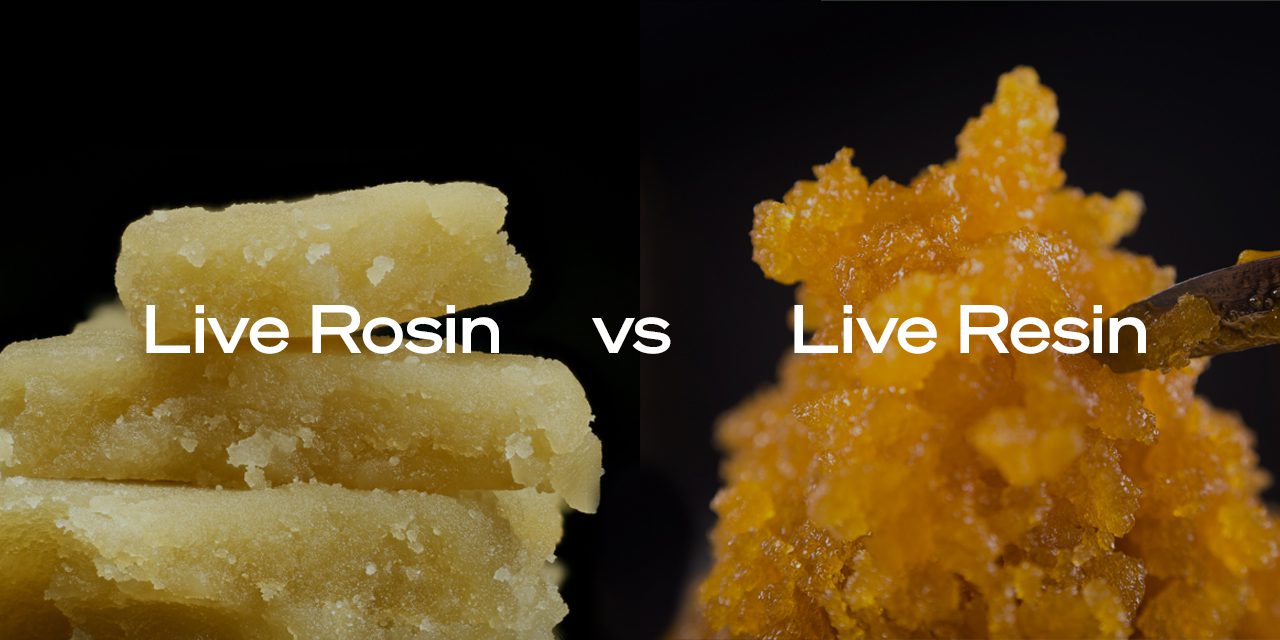
Live Rosin vs Hash Rosin
Live rosin and hash rosin are both forms of cannabis concentrates that are known for their high-quality and potent nature. They differ in the methods used for extraction and the final product’s consistency and flavor.
Live rosin is made using freshly harvested cannabis plants that are flash-frozen to preserve terpenes and cannabinoids. The process involves extracting trichomes from the frozen plant material, using a method called bubble hash. It is then subjected to a combination of heat and pressure, resulting in a solventless concentrate with a high terpene profile and a rich, vibrant flavor.
On the other hand, hash rosin is derived from dried and cured cannabis plants. The extraction process begins with traditional hash making, using heat and pressure to transform kief or hash into a more refined product. While hash rosin may offer a more intense flavor, it often lacks the diverse range of terpenes found in live rosin.
Both live and hash rosin are created without solvents, making them preferred choices for those seeking a pure, clean, and natural cannabis experience. They both rely on mechanical methods for extraction, such as heat and pressure, resulting in a concentrated product that is high in potency.
In terms of consistency, live rosin has a more sappy and malleable texture, similar to honey, while hash rosin tends to be more stable and crumbly. The specific consistency of each type of rosin depends on various factors, including the starting material, extraction techniques, and post-extraction processes.
The use of full-melt extraction methods for either live or hash rosin produces a high-quality product that is considered top-tier in the concentrate market. Full-melt refers to the process where the concentrate is heated and melts completely, creating a smooth and desirable dabbing experience.
In conclusion, the preference for live rosin versus hash rosin ultimately depends on the individual’s taste and desired effects. Those who seek a more vibrant and terpene-rich experience may opt for live rosin, while others who prioritize a more potent and traditional flavor might prefer hash rosin.
The Extraction Process
Hash rosin and rosin are two types of cannabis concentrates that have gained popularity due to their solventless extraction process. This process ensures a clean and pure final product. In this section, we will explain the extraction process for both hash rosin and rosin.
The primary difference between hash rosin and rosin is the starting material. For hash rosin, the extraction begins with cannabis resin glands or trichomes that have been separated from the flower or trim by using methods such as dry sifting or ice water extraction. On the other hand, rosin extraction starts with the flower or trim itself, without any separation of trichomes.

The key to producing both hash rosin and rosin lies in the use of a rosin press. This device applies a combination of heat and pressure to the starting material, causing the oils within the cannabis to liquefy and flow out, leaving behind the plant matter. The resulting liquid is then collected and allowed to cool, solidifying into a stable concentrate.
When extracting rosin, the cannabis material is typically placed between screens or parchment paper to prevent plant matter from contaminating the final product. With hash rosin, the separated trichomes or hash can be pressed directly, sometimes using a filter bag.
One aspect to note is that the temperature and pressure applied during the extraction process greatly influence the final product’s quality and consistency. Lower temperatures and increased pressure levels generally yield more of a stable, shatter-like consistency, whereas higher temperatures and lower pressure levels result in a more viscous, sap-like extract.
Here’s a summary of the main differences between the hash rosin and rosin extraction process:
- Hash rosin starts with separated trichomes or hash, whereas rosin starts with the flower or trim material.
- Both extraction methods use a rosin press to apply heat and pressure.
- Rosin extraction involves the use of screens or parchment paper for separation, while hash rosin may use a filter bag.
- Temperature and pressure levels during the extraction process shape the consistency of the final product.
In conclusion, both hash rosin and rosin extraction methods rely on a solventless process that emphasizes the use of heat and pressure. This results in a cleaner and purer cannabis concentrate, providing users with a high-quality product.
Solvents vs Solventless
Rosin, a form of cannabis concentrate, has gained popularity in recent years due to its solventless extraction method. This means that rosin doesn’t involve any chemicals, such as butane, to extract the cannabinoids and terpenes from the cannabis plant. Instead, it uses heat and pressure to produce a pure, clean product. On the other hand, solvent-based extractions like butane hash oil (BHO) use chemical solvents to extract these compounds.
Solventless rosin extraction has numerous benefits over solvent-based methods, particularly when it comes to safety and purity. Since no chemicals are used in the process, there is no risk of residual solvents remaining in the final product. This is especially important for medical marijuana patients who require a pure and untainted medicine. Rosin extraction also doesn’t produce toxic byproducts, making it a more environmentally friendly option.
On the other hand, solvent-based extraction methods like BHO involve using chemicals such as butane to separate the desired components from the cannabis plant material. While these methods can produce high-quality products, there is a risk of residual solvents being left behind if the extraction process isn’t performed correctly. Additionally, the use of solvents can lead to explosions and fires if not handled properly, posing a risk to both producers and consumers.
When comparing solvent-based concentrates like BHO to solventless options like rosin, it’s essential to consider the potential risks and benefits. While both methods can result in high-quality products, rosin extraction tends to be favored for its safety, purity, and environmental impact.
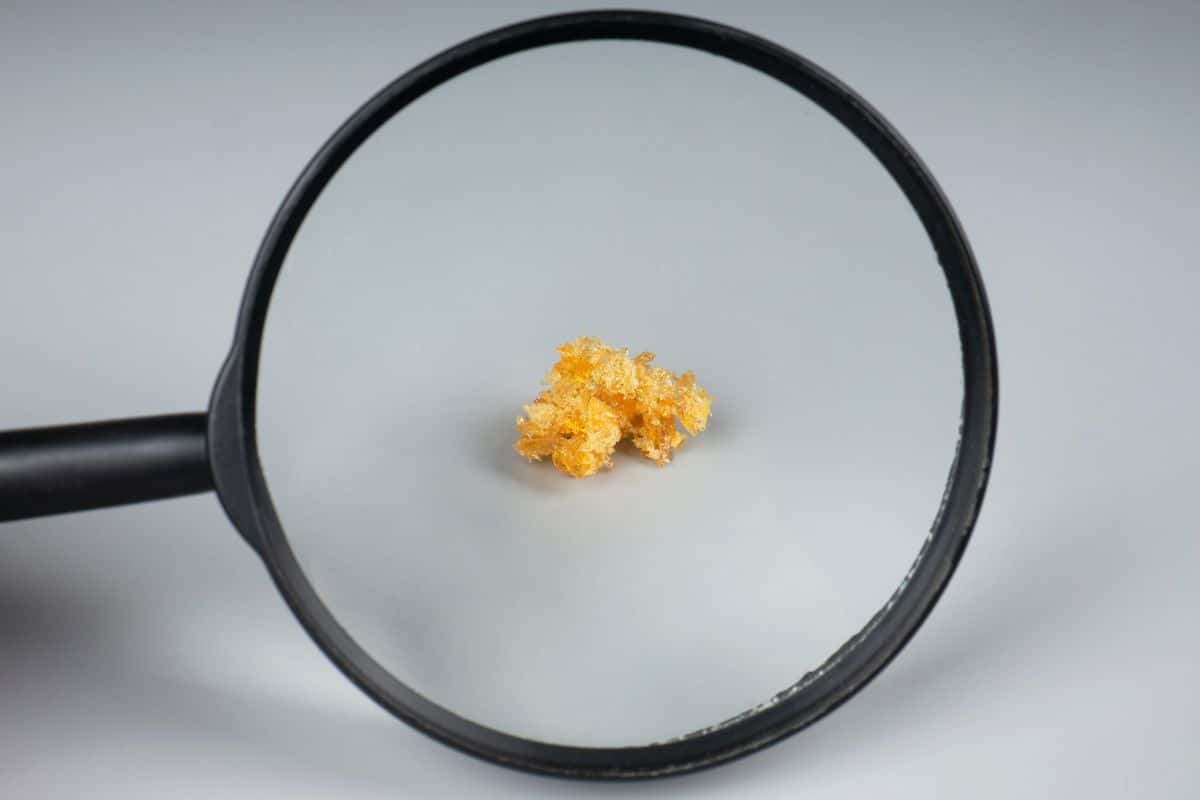
Why Choose Hash Rosin
Hash rosin has continued to gain popularity due to its exceptional flavor profile and quality. When compared to flower rosin, hash rosin offers a more pronounced and diverse range of terpenes, which contribute significantly to its taste and aroma. This makes hash rosin an especially appealing choice for cannabis connoisseurs who value the unique and complex flavors of each strain.
One of the key aspects of hash rosin is its high-quality preparation method. By using ice water extraction, the trichomes are gently separated from the plant material, resulting in a clean, concentrated product. This process minimizes the possibility of contaminants, ensuring a pure and potent final product. When properly produced, hash rosin can boast a superior cannabinoid and terpene profile when compared to other concentrates.
It’s worth noting that hash rosin is a solventless concentrate, meaning that no harmful chemicals are used during the extraction process. This results in a cleaner and more natural product, which is appreciated by those seeking a safer and more health-conscious option. Additionally, the solventless nature of hash rosin makes it a highly desirable choice for medical marijuana users who require a pure and unadulterated medicine.
In conclusion, the remarkable flavor_profile and terpenes present in hash rosin, along with its high-quality extraction methods and solventless nature, make it an attractive option for those seeking a premium cannabis concentrate. Whether you’re a seasoned enthusiast or a medical marijuana patient, hash rosin offers a refined and unadulterated experience worth considering.
Calculating Potency of Rosin
When it comes to understanding the potency of rosin, it’s essential to consider several factors. Rosin, a solventless concentrate, is derived from the resinous sap of cannabis plants through a process of heat and pressure. This method captures the full spectrum of cannabinoids and terpenes, producing a potent and flavorful concentrate.
One key factor in determining rosin potency is the level of cannabinoids present in the concentrate. These are the active compounds responsible for the therapeutic and psychoactive effects of cannabis. The most well-known cannabinoid is THC, which contributes to the recreational high and several medicinal properties of the plant. The overall cannabinoid profile of rosin depends on the starting material used, and it generally retains a similar ratio of cannabinoids as the original plant.
To calculate the THC percentage of rosin, one can use lab testing or estimation based on the starting material. Lab testing involves submitting a sample to a certified laboratory for analysis, which will provide a detailed report on the concentration of cannabinoids. However, this service may not be accessible for everyone. In this case, estimating the THC percentage can be done by considering the average potency of the starting material and factoring in the extraction efficiency of the rosin process.
It’s important to note that potency is influenced not only by cannabinoids but also by the terpene profile, which is responsible for the unique aroma and flavor of each cannabis strain. Terpenes also play a role in the entourage effect, whereby the combined interaction of various cannabinoids and terpenes enhances the overall experience and therapeutic potential.
Comparing hash rosin and traditional rosin, hash rosin tends to be more potent due to its increased concentration of cannabinoids and terpenes. Derived from hash or bubble hash, the initial material comprises resin glands separated from the plant, leading to a higher cannabinoid content.
In conclusion, calculating the potency of rosin involves considering both the cannabinoid and terpene profiles with a focus on THC percentage. Lab testing and estimation serve as methods for determining these percentages, and hash rosin typically demonstrates increased potency due to its source material. With this information, consumers can make informed decisions on their usage and experience with rosin concentrates.

Common Practices and Equipment
In the world of cannabis concentrates, hash rosin and rosin are two popular products known for their high-quality and potent effects. Both are solventless extracts created using different methods, but they share some common practices and equipment in their production process.
To create rosin, a combination of heat and pressure is applied to cannabis flower or hash using a rosin press. This process extracts the essential oils and cannabinoids, resulting in a sticky, resinous substance. Rosin presses come in various types, from manual to hydraulic and pneumatic, each catering to specific needs and production scales.
On the other hand, hash rosin is made by pressing high-quality ice water hash or dry sift hash. The process involves an additional step of filtering and refining the hash before pressing it into rosin, typically using finer mesh or micron sizes. This ensures a cleaner and purer concentrate with superior taste and potency.
A key piece of equipment in both methods is the dab rig, a specialized glass or electronic device used for consuming concentrates like rosin and hash rosin. Dab rigs are designed to heat the concentrate to the optimal temperature, allowing users to inhale the vapor without combustion. This ensures a smooth, intense, and flavorful experience.
When pressing rosin, using the appropriate micron sizes for filter bags can make a significant difference in the final product’s quality. For cannabis flower, a micron size of 90-180 works well, while hash rosin typically requires a finer mesh size, around 25-90 microns.
In summary, both hash rosin and rosin have their unique practices and equipment needed to produce high-quality and potent cannabis concentrates. The main differences between the two methods involve the source material and the filtration process. By using the right equipment and practices like choosing suitable rosin press types and micron sizes, one can create a flavorful and pure cannabis concentrate ideal for any desired experience.
Final Thoughts
Hash rosin and rosin are both popular options among cannabis consumers who appreciate solventless extracts. These concentrates provide a cleaner, tastier, and more potent experience compared to solvent-based extracts.
When it comes to quality, hash rosin has a slight edge over regular rosin due to its more refined production process, which involves pressing cannabis trichomes rather than the entire plant material. This results in a concentrate with a higher cannabinoid content and overall better flavor profile. However, it is important to keep in mind that hash rosin is typically more expensive than its counterpart.
For those looking to purchase these products, a dispensary is the best option for finding a wide variety of rosins and hash rosins, as well as expert advice from knowledgeable staff. Consumers should pay attention to the quality of the product, as well as the reputation and extraction methods employed by the manufacturer.
Regarding consumption methods, one popular choice is using a cartridge filled with rosin or hash rosin oil. These cartridges can easily be attached to a vaporizer or vape pen, providing a convenient and discreet way to consume the concentrates.
In conclusion, both hash rosin and rosin cater to different preferences among cannabis enthusiasts. Newcomers may want to start with rosin due to its lower price point, while those looking for a refined and more potent experience may choose to invest in hash rosin. Ultimately, both options provide a high-quality and enjoyable experience that is free from potentially harmful solvents.
Frequently Asked Questions
What are the main differences between hash rosin and live rosin?
Hash rosin and live rosin are both solventless cannabis concentrates. The primary difference between the two lies in the starting material. Hash rosin is derived from traditional hash or bubble hash, which is made by using ice water to separate trichomes from plant material. Live rosin, on the other hand, is made from fresh frozen cannabis buds that have been washed with ice water before being pressed.
How does the potency of hash rosin compare to live resin?
Hash rosin and live resin are not the same product; live resin is a solvent-based cannabis extract typically made using butane or CO2. While both hash rosin and live resin are potent in terms of cannabinoids and terpenes, they offer different experiences. Hash rosin is known for its full-spectrum profile and high THC content, while live resin is loved for its rich terpene profile and potent flavor. Comparing potency strictly depends on the starting material and extraction method used.
Why is hash rosin typically more expensive than regular rosin?
Hash rosin is generally more expensive for a few reasons. First, its production process is more labor-intensive and requires higher-quality starting materials. Second, the yields can be lower when producing hash rosin compared to regular rosin. Lastly, the demand for high-quality, solventless concentrates often drives up the price.
Are hash rosin cartridges more potent than flower rosin cartridges?
Hash rosin cartridges can be more potent than flower rosin cartridges due to the increased concentration of cannabinoids and terpenes in the starting material. Hash rosin is made from highly concentrated trichomes, while flower rosin is made from pressed cannabis flowers. However, this difference can vary based on the specific strains and extraction methods used.
What are the main differences in production methods for bubble hash and rosin?
Bubble hash and rosin each have unique production methods. Bubble hash is made using ice water, agitation, and a series of specialized mesh bags called bubble bags to separate the trichomes from the plant material. The collected trichomes are then dried and cured to create bubble hash.
Rosin, on the other hand, is made by applying heat and pressure to cannabis flowers or hash. This process melts the trichomes, producing a viscous, potent concentrate that can be collected on parchment paper or other non-stick surfaces.
Why do some people prefer hash rosin edibles over regular edibles?
Some people prefer hash rosin edibles due to their solventless nature and full-spectrum cannabinoid profile. Hash rosin edibles can offer a more well-rounded experience by preserving the plant’s original mix of cannabinoids and terpenes. This can result in a more enjoyable and balanced effect compared to edibles made with solvent-based extracts like distillate or BHO.

